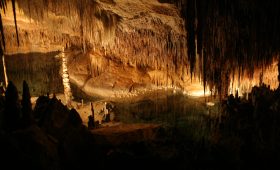Machu Picchu: A Journey Through Time
History and Significance
Machu Picchu, perched dramatically 1,000 feet above the Urubamba River, is a UNESCO World Heritage Site and a testament to the ingenuity of the Inca civilization. Built around AD 1430, it was likely a country retreat for elite Incas, accommodating no more than 750 people at its peak. The site was abandoned during the Spanish conquest and remained largely unknown to the outside world until 1911, when American archaeologist Hiram Bingham, guided by locals, brought it to international attention.
The site’s architecture, with its polished dry-stone walls, showcases the Incas’ advanced engineering skills. Key structures like the Intihuatana, the Temple of the Sun, and the Room of the Three Windows are located in what archaeologists call the Sacred District of Machu Picchu. These buildings reflect the Incas’ deep understanding of astronomy and their cultural practices.
Getting There
Your journey to Machu Picchu typically begins in Lima, Peru’s capital, where international flights land. From Lima, a domestic flight takes you to Cusco, the gateway to Machu Picchu. In Cusco, you have two main options: take a scenic train ride to Aguas Calientes or embark on the famous Inca Trail trek. The train offers a comfortable and picturesque route, while the multi-day hike provides a more immersive experience, culminating at the Sun Gate with breathtaking views of Machu Picchu.
Best Time to Visit
The dry season, from May to October, is the ideal time to visit Machu Picchu. These months offer clear skies and mild temperatures, perfect for exploring the ruins and hiking the trails. However, be prepared for crowds, especially from June to August. For a quieter experience, consider visiting in May or September. Note that the rainy season runs from October to April, which can make trails slippery and less accessible.
Local Transportation
Aguas Calientes, the town at the base of Machu Picchu, is compact and walkable. Most accommodations and dining options are within easy reach. To reach Machu Picchu, shuttle buses run frequently from Aguas Calientes to the site entrance. Alternatively, you can hike the steep trail if you’re up for a physical challenge.
Exploring Machu Picchu
Upon entering Machu Picchu, you’ll find yourself immersed in a world of ancient wonder. Explore iconic structures like the Temple of the Sun and the Intihuatana Stone, each with its own historical and cultural significance. For panoramic views, consider hiking up Huayna Picchu or Machu Picchu Mountain. These hikes are challenging but reward you with stunning vistas of the entire site.
Accommodation Options
While there are no accommodations within Machu Picchu itself, Aguas Calientes offers a range of options, from budget hostels to luxury hotels. For a unique experience, consider staying at an eco-lodge in the surrounding cloud forests, where you can enjoy the tranquility and natural beauty of the area.
Summary of Facts
- Machu Picchu is a UNESCO World Heritage Site, built by the Incas around AD 1430.
- The site was rediscovered by Hiram Bingham in 1911.
- The dry season, from May to October, is the best time to visit.
- Aguas Calientes serves as the base town for visiting Machu Picchu.
- Key structures include the Intihuatana, the Temple of the Sun, and the Room of the Three Windows.
- Huayna Picchu and Machu Picchu Mountain offer panoramic views of the site.




